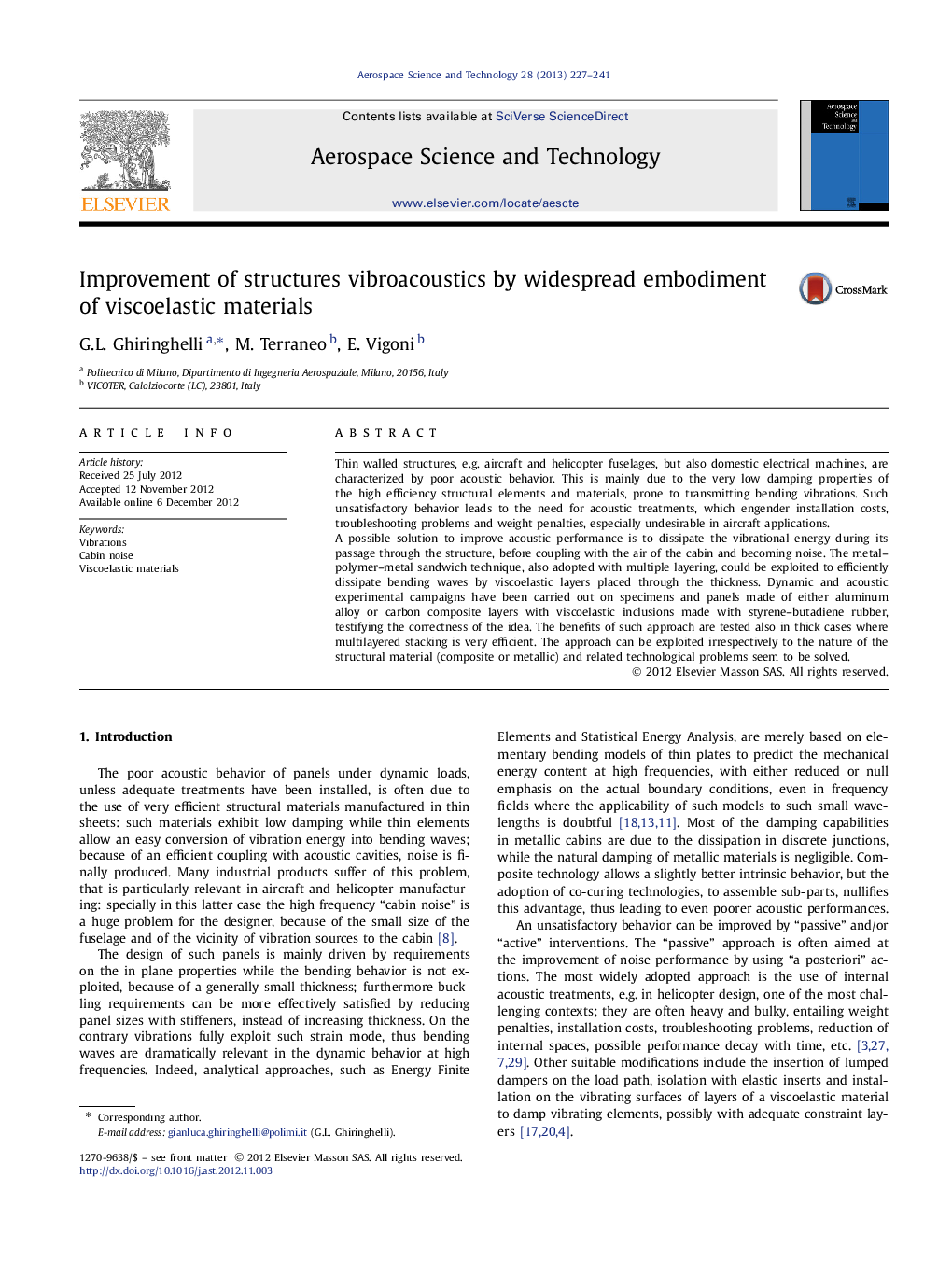| Article ID | Journal | Published Year | Pages | File Type |
|---|---|---|---|---|
| 1718276 | Aerospace Science and Technology | 2013 | 15 Pages |
Thin walled structures, e.g. aircraft and helicopter fuselages, but also domestic electrical machines, are characterized by poor acoustic behavior. This is mainly due to the very low damping properties of the high efficiency structural elements and materials, prone to transmitting bending vibrations. Such unsatisfactory behavior leads to the need for acoustic treatments, which engender installation costs, troubleshooting problems and weight penalties, especially undesirable in aircraft applications.A possible solution to improve acoustic performance is to dissipate the vibrational energy during its passage through the structure, before coupling with the air of the cabin and becoming noise. The metal–polymer–metal sandwich technique, also adopted with multiple layering, could be exploited to efficiently dissipate bending waves by viscoelastic layers placed through the thickness. Dynamic and acoustic experimental campaigns have been carried out on specimens and panels made of either aluminum alloy or carbon composite layers with viscoelastic inclusions made with styrene–butadiene rubber, testifying the correctness of the idea. The benefits of such approach are tested also in thick cases where multilayered stacking is very efficient. The approach can be exploited irrespectively to the nature of the structural material (composite or metallic) and related technological problems seem to be solved.
